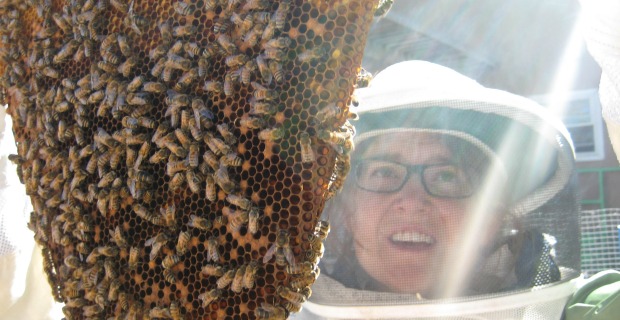Once you’ve checked your allergies, checked your codes and checked your motives, the next step in your beekeeping journey is to start making some serious plans to set yourself and your bees up for the greatest success possible.
Before we get into the details about your bees hive and home, I’d like to encourage you to research beekeeping groups in your area and online. Having a support system in place to bounce questions off or help in an emergency (swarm, anyone?), is important for your sanity and your bees survival. These in-person and online groups will also help you decide where to purchase your bees keeping in mind that bees already adapted to your climate will do better in the long run. Enough said.
Hive
Do some research and decide on which type of hive you would like to keep. The most common types of hives are the Top Bar, the Langstroth and the Warre. They each have their benefits and downfalls and should each be considered & decided upon based on your personal preference. We chose a Top Bar hive after being inspired by the folks at Root Simple and Backwards Beekeepers.
Once you decide on the type of hive you want to keep, the next thing to decide on is whether you want to purchase a pre-made hive, look for a used one on Craigslist or FreeCycle, or build your own. Again, each have their benefits and downfalls (cost, potential for disease, skill level) and you will truly have to decide for yourself which method is best.
Home
The next step in your beekeeping journey is to decide on a location for your hive.
- Sunshine and shade. Morning sun and afternoon shade (even dappled shade) are essential for their survival. You don’t want frozen or baked bees, so plan wisely.
- Shelter. Being tucked along a tree line is perfect, but a wall or hedge-line can work, too.
- Clear paths. Ensuring that their path in and out of the hive is clear is important. I’ve been bopped in the head by bees who were just trying to make it home because I was standing in the wrong spot. It was no fun for me and surely no fun for the poor bees.
- Water. Set up a fountain or bird bath nearby so they always have access to clean, fresh water.
- Pollen. While honey bees can travel up to five miles in search of pollen, they’re just as happy to find it in their own yard. Plant a variety of native wild flowers of different colors that bloom at different times of the season and you’re bees will love you for it. Read more about helping all pollinators HERE.
Alright, how are you feeling? Ready for the next step? Sweet! Next up: We’ll talk about equipment! Stay tuned 🙂
xoxo,
M
Linking up to the Homestead Barn Hop #150, Homemade Mondays #71, the HomeAcre Hop #61


Great info! Thanks for sharing on The HomeAcre Hop! Hope you have time to share again today!
lisa lynn recently posted…Homestead Cooking with Carol Giveaway & The HomeAcre Hop #62
Pingback: Beekeeping Basics - Equipment - Ever Growing Farm | Ever Growing Farm
Pingback: Welcoming Spring ~ wrapping it up | American Family Now
Pingback: Homesteading Blog Love #9 - Faulk Farmstead